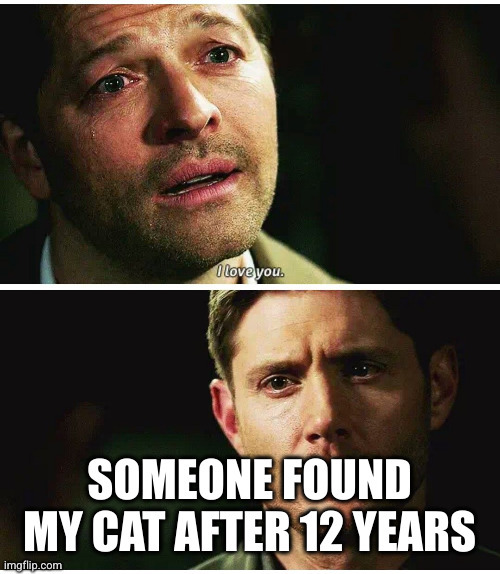Soony Is A Minifee Juri14/Soony Color Matched To A Myou Doll Double Jointed V3 Body In Coffee. 💖


Soony is a minifee juri14/Soony color matched to a myou doll double jointed v3 body in coffee. 💖
More Posts from Groovyblueworld and Others

The data does not support the assumption that all burned out people can “recover.” And when we fully appreciate what burnout signals in the body, and where it comes from on a social, economic, and psychological level, it should become clear to us that there’s nothing beneficial in returning to an unsustainable status quo.
The term “burned out” is sometimes used to simply mean “stressed” or “tired,” and many organizations benefit from framing the condition in such light terms. Short-term, casual burnout (like you might get after one particularly stressful work deadline, or following final exams) has a positive prognosis: within three months of enjoying a reduced workload and increased time for rest and leisure, 80% of mildly burned-out workers are able to make a full return to their jobs.
But there’s a lot of unanswered questions lurking behind this happy statistic. For instance, how many workers in this economy actually have the ability to take three months off work to focus on burnout recovery? What happens if a mildly burnt-out person does not get that rest, and has to keep toiling away as more deadlines pile up? And what is the point of returning to work if the job is going to remain as grueling and uncontrollable as it was when it first burned the worker out?
Burnout that is not treated swiftly can become far more severe. Clinical psychologist and burnout expert Arno van Dam writes that when left unattended (or forcibly pushed through), mild burnout can metastasize into clinical burnout, which the International Classification of Diseases defines as feelings of energy depletion, increased mental distance, and a reduced sense of personal agency. Clinically burned-out people are not only tired, they also feel detached from other people and no longer in control of their lives, in other words.
Unfortunately, clinical burnout has quite a dismal trajectory. Multiple studies by van Dam and others have found that clinical burnout sufferers may require a year or more of rest following treatment before they can feel better, and that some of burnout’s lingering effects don’t go away easily, if at all.
In one study conducted by Anita Eskildsen, for example, burnout sufferers continued to show memory and processing speed declines one year after burnout. Their cognitive processing skills improved slightly since seeking treatment, but the experience of having been burnt out had still left them operating significantly below their non-burned-out peers or their prior self, with no signs of bouncing back.
It took two years for subjects in one of van Dam’s studies to return to “normal” levels of involvement and competence at work. following an incident of clinical burnout. However, even after a multi-year recovery period they still performed worse than the non-burned-out control group on a cognitive task designed to test their planning and preparation abilities. Though they no longer qualified as clinically burned out, former burnout sufferers still reported greater exhaustion, fatigue, depression, and distress than controls.
In his review of the scientific literature, van Dam reports that anywhere from 25% to 50% of clinical burnout sufferers do not make a full recovery even four years after their illness. Studies generally find that burnout sufferers make most of their mental and physical health gains in the first year after treatment, but continue to underperform on neuropsychological tests for many years afterward, compared to control subjects who were never burned out.
People who have experienced burnout report worse memories, slower reaction times, less attentiveness, lower motivation, greater exhaustion, reduced work capability, and more negative health symptoms, long after their period of overwork has stopped. It’s as if burnout sufferers have fallen off their previous life trajectory, and cannot ever climb fully back up.
And that’s just among the people who receive some kind of treatment for their burnout and have the opportunity to rest. I found one study that followed burned-out teachers for seven years and reported over 14% of them remained highly burnt-out the entire time. These teachers continued feeling depersonalized, emotionally drained, ineffective, dizzy, sick to their stomachs, and desperate to leave their jobs for the better part of a decade. But they kept working in spite of it (or more likely, from a lack of other options), lowering their odds of ever healing all the while.
Van Dam observes that clinical burnout patients tend to suffer from an excess of perseverance, rather than the opposite: “Patients with clinical burnout…report that they ignored stress symptoms for several years,” he writes. “Living a stressful life was a normal condition for them. Some were not even aware of the stressfulness of their lives, until they collapsed.”
Instead of seeking help for workplace problems or reducing their workload, as most people do, clinical burnout sufferers typically push themselves through unpleasant circumstances and avoid asking for help. They’re also less likely to give up when placed under frustrating circumstances, instead throttling the gas in hopes that their problems can be fixed with extra effort. They become hyperactive, unable to rest or enjoy holidays, their bodies wired to treat work as the solution to every problem. It is only after living at this unrelenting pace for years that they tumble into severe burnout.
Among both masked Autistics and overworked employees, the people most likely to reach catastrophic, body-breaking levels of burnout are the people most primed to ignore their own physical boundaries for as long as possible. Clinical burnout sufferers work far past the point that virtually anyone else would ask for help, take a break, or stop caring about their work.
And when viewed from this perspective, we can see burnout as the saving grace of the compulsive workaholic — and the path to liberation for the masked disabled person who has nearly killed themselves trying to pass as a diligent worker bee.
I wrote about the latest data on burnout "recovery," and the similarities and differences between Autistic burnout and conventional clinical burnout. The full piece is free to read or have narrated to you in the Substack app at drdevonprice.substack.com

when your art program’s closing message hits you straight in the heart and makes you stop and contemplate the state of it all
Dear doll artists,
Start making tall 1/4 girls.
All the boys be getting to 45cm and over, but all the girls still stuck at like…fucking 40-41cm. My girls shouldn’t have to be wearing stilettos + platforms to be taller than their men. D;
So excited!
Some fun with my Muriel prototypes! A quick lil promo video for my Kickstarter; the full one on the project page will feature... My face... But for now we just goin doll-only
Here is the pre-launch page if you'd like to be reminded when it goes live! I plan to launch September 5th!


cute

I could think of no better way to share the news than this!
So when I was 17, my cat went missing and I'd given up hope of ever seeing him again.
Until on Monday, 27th of May, 2024, my friend sent me a FB post asking 'isn't that your mother?' about the person named on the microchip.

Here he is! 16 years old, and found safe, twelve whole years after he went missing!
Yesterday (Tuesday the 28th of May, 2024) I went to the rescue that had him, and I reclaimed my boy, renaming him Artie! (He'd originally been called 'Cat' because my mother and I couldn't decide on a name)
He's home safe with me now, currently inhabiting my bathroom and purring up a storm every time someone goes in there!
I'll be doing slow introductions between him and my current cat to give them the best possible chance of living in harmony!
Here's some pictures of Artie once we let him out of the carrier:




🦖 Dinosaurs and vintage girls 🎀






Two things you wouldn’t think go together… but in my world they do 🤭 a small series of illustrations I did for fun! All of these are in my print shop if you’d like to have a little dino for yourself lol




I'm having a conniption over how much I 💖💝💞🥰😻 her.

A long time dream has been realized!
This girl needs some work, but for TEN FRIGGEN DOLLARS she was coming home with me one way or the other.
As time passes I’ll be painting and putting different hardware in. For now, I enjoy the crew being out of my way. lol.













Amazing news I just found out! The wonderful Three Lights, a repository for high quality Sailor Moon scans, has HQ scans of the ultra-rare calendar that Naoko Takeuchi and her husband Yoshihiro Togashi (creator of Hunter x Hunter among other series) made in 1999 to commemorate their wedding.
This is such a blessing to both fandoms!
-
 thedumbestofrocks liked this · 1 year ago
thedumbestofrocks liked this · 1 year ago -
 let-the-mirelurk liked this · 1 year ago
let-the-mirelurk liked this · 1 year ago -
 azureagape liked this · 1 year ago
azureagape liked this · 1 year ago -
 angelbl00m liked this · 1 year ago
angelbl00m liked this · 1 year ago -
 amu-brain-dump liked this · 1 year ago
amu-brain-dump liked this · 1 year ago -
 phosfaerie reblogged this · 1 year ago
phosfaerie reblogged this · 1 year ago -
 simplesignifier liked this · 1 year ago
simplesignifier liked this · 1 year ago -
 bunnyscribblesbjd liked this · 1 year ago
bunnyscribblesbjd liked this · 1 year ago -
 armeleia liked this · 1 year ago
armeleia liked this · 1 year ago -
 shiisiln reblogged this · 1 year ago
shiisiln reblogged this · 1 year ago -
 shiisiln liked this · 1 year ago
shiisiln liked this · 1 year ago -
 rosslynpaladin liked this · 1 year ago
rosslynpaladin liked this · 1 year ago -
 twinklesbrightly liked this · 1 year ago
twinklesbrightly liked this · 1 year ago -
 krazyjoe liked this · 1 year ago
krazyjoe liked this · 1 year ago -
 dreamsdollsanddresses reblogged this · 1 year ago
dreamsdollsanddresses reblogged this · 1 year ago -
 yourheartinyourmouth liked this · 1 year ago
yourheartinyourmouth liked this · 1 year ago -
 nemjun liked this · 1 year ago
nemjun liked this · 1 year ago -
 larval-trust liked this · 1 year ago
larval-trust liked this · 1 year ago -
 the-17th-star-of-kai liked this · 1 year ago
the-17th-star-of-kai liked this · 1 year ago -
 kosomolski-dolls reblogged this · 1 year ago
kosomolski-dolls reblogged this · 1 year ago -
 kosomolski-dolls liked this · 1 year ago
kosomolski-dolls liked this · 1 year ago -
 adihildilid reblogged this · 1 year ago
adihildilid reblogged this · 1 year ago -
 curiobjd reblogged this · 1 year ago
curiobjd reblogged this · 1 year ago -
 curiobjd liked this · 1 year ago
curiobjd liked this · 1 year ago -
 groovyblueworld reblogged this · 1 year ago
groovyblueworld reblogged this · 1 year ago -
 groovyblueworld liked this · 1 year ago
groovyblueworld liked this · 1 year ago -
 eponadolls reblogged this · 1 year ago
eponadolls reblogged this · 1 year ago

she/her. migrating here from Instagram. Here to look at dolls and have fun. forever pro artist 😎.
231 posts